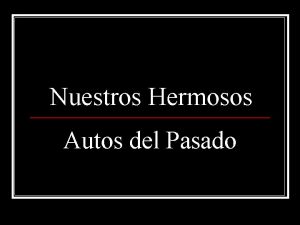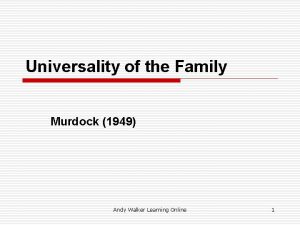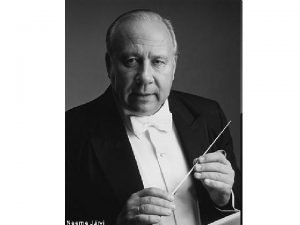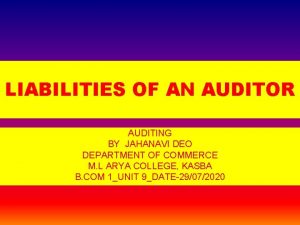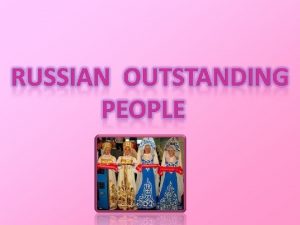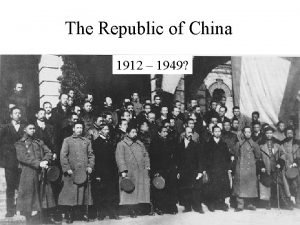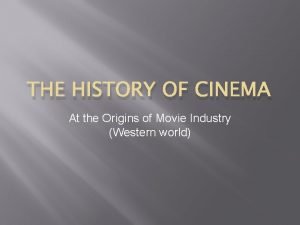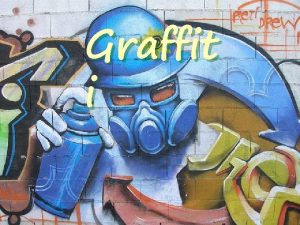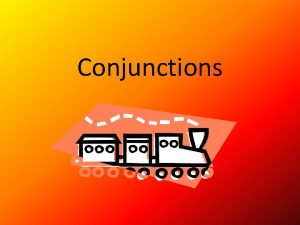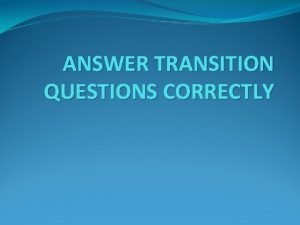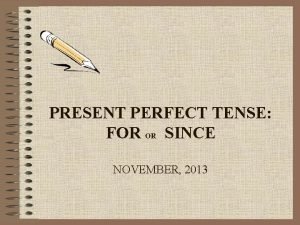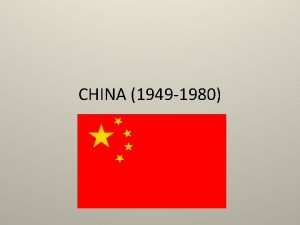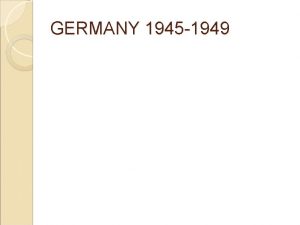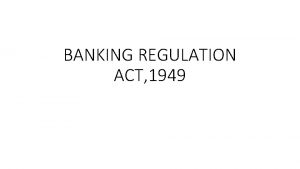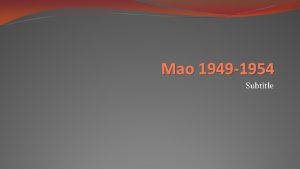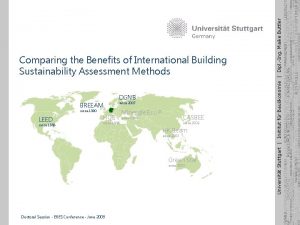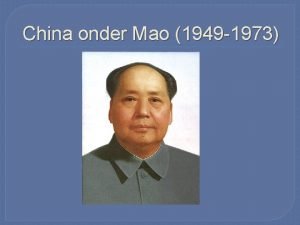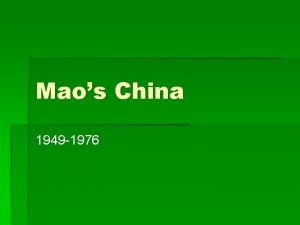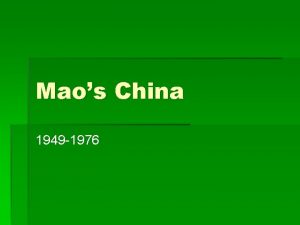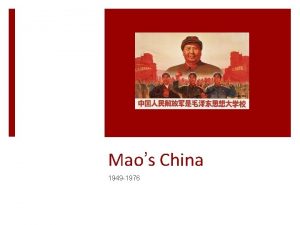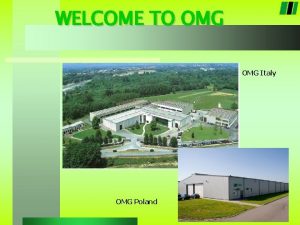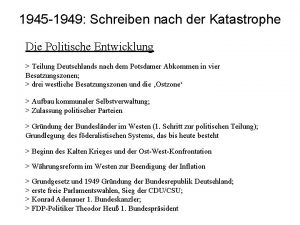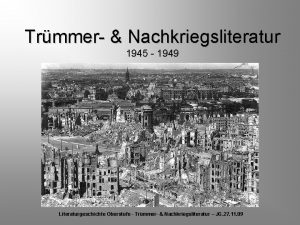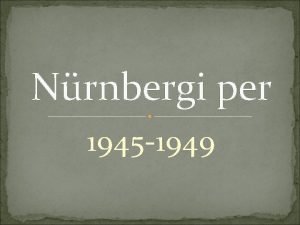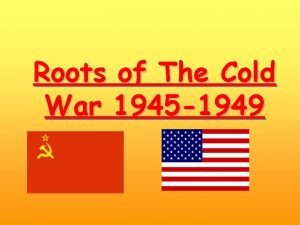China since 1945 From 1945 to 1949 China























- Slides: 23


China since 1945 • From 1945 to 1949 China was involved in a civil war • In 1949 the Communists win and establish the People’s Republic of China • Mao becomes the leader of China Mao Tse-tung

China since 1945 • Mao declared that China was against imperialism, feudalism, bureaucracy and democracy • He had many plans to change China and immediately put them into action • His new government enacted many plans to fix problems such as inflation and low production

Mao’s Plans for China • The Great Leap Forward – Created communes (selfsufficient settlements containing farms and industries) – They did not work at all: production fell, life was difficult, China experienced bad weather, rewards were limited – The plan was abandoned after two years “Long live the general direction! Long live the Great Leap Forward! Long live the People’s Commune!”

Mao’s Plans for China • After the failure of the Great Leap Forward Mao attempted a Cultural Revolution • The goal of the Cultural Revolution was to change the old order and establish a new socialist society • The Red Guard (young men and women) would enforce the policies of the revolution

Mao’s Plans For China • The revolution was to destroy the four olds: old ideology, old thoughts, old habits and old customs • Those who opposed Mao were publicly punished • Farm production fell, factory work stopped and schools closed • As a result there was no economy, many people had left and there was no education • It was an enormous failure and Mao ended it in 1969

Answer the following • Why would the people of China still support Mao after two very large failures? • Take a few moments to think about why the people might still be behind Mao. • Can you think of any examples in our history of when a president has a great failure and we still support him?

Cultural Revolution (1966 -1976) • Great Proletarian Cultural Revolution – commitment to revolution and “class struggle” – power struggle to succeed Mao • Phase I: the rise and fall of “red guards” • Phase II: the rise and fall of Lin Biao • Phase III: the rise and fall of the “Gang of Four”

Phase I: Red Guards (1966 -69)

Phase I: Red Guards (1966 -69) • Purge of party squads – Deng Xiaoping • Purge of intellectuals

Phase II: Lin Biao (1969 -71) • the assumed successor to Mao Zedong (tse-tung) • In 1971 Lin allegedly tried but failed – to assassinate Mao – had to flee to Soviet Union • His departure eroded the credibility of the entire leadership

Phase III: the “Gang of Four” • 1972 – 1976 • power struggle between – the radical “Gang of Four”, led by Jiang Qing, Mao’s wife – Goal continue Cultural revolution…failed when Mao dies and his power is gone…gang of 4 put on trial and convicted…. Dang Xiaoping takes power

Diplomatic Breakthrough • 1971, PRC became the representative of China in UN (replaced ROC)

Diplomatic Breakthrough • 1972, President Nixon visited Beijing

Mao and Zhou Died in 1976 • Turning point in China’s postwar era • “Gang of Four” were arrested • End of the Cultural Revolution

Mao’s legacies

Reforms and Opening up • The 3 rd Plenum of the 11 th CCP Central Committee in 1978 – Deng Xiaoping’s ascendancy – economic modernization became focus • US-PRC diplomatic relations in 1979

China since 1945 • Mao dies in 1976 and Deng Xiaoping comes to power. • Deng institutes the Four Modernizations, which focuses on improving agriculture, industry, science and technology as well as defense. • Deng was in power until his death in 1997

Government in China Today • Currently known as the People’s Republic of China (PRC). • It is a single-party socialist republic (one party, in favor of the working class) • The Communist party holds power • The current president is Hu Jianto • Beijing is the capital city

Review of China’s Population • Over 1. 3 billion people (1/5 of the world’s population) • 56 recognized ethnic groups. The Han are the largest (92%) • Large population can be attributed to Mao

Population in China • Efforts were made to limit the population – Only 2 children per family law – One Child Policy • Policies did not work that well – Rural families did not comply – Males regarded more highly than females

Geography Review • China is the world’s second largest country by land area (9, 326, 410 km 2) • China has a wide range of topography • There are numerous plains, plateaus, basins and mountains • Only 14% of the land is arable

Chinese Language • Many dialects are spoken in China, but Mandarin is the most widely spoken • 70% of the people in China speak it • It is the most widely spoken language in the world (100 million people speak it worldwide
 Guerra civil china mapa
Guerra civil china mapa 1954 chevrolet bel air
1954 chevrolet bel air Arthur miller 1949
Arthur miller 1949 Modelo shannon e weaver
Modelo shannon e weaver Murdock 1949
Murdock 1949 Caricature krokodil 1949
Caricature krokodil 1949 Helilooja 1949-2001
Helilooja 1949-2001 Lahalibo 1949
Lahalibo 1949 Criminal liabilities of an auditor
Criminal liabilities of an auditor Alla pugacheva was born in 1949 in moscow
Alla pugacheva was born in 1949 in moscow 1949-1912
1949-1912 Ang wika ay likas na pantao
Ang wika ay likas na pantao Re hopkinson 1949
Re hopkinson 1949 Samson and delilah 1949
Samson and delilah 1949 The 3 apparitions in scene 1 leave macbeth feeling
The 3 apparitions in scene 1 leave macbeth feeling Since graffiti
Since graffiti Since long time ago
Since long time ago Since the very beginning
Since the very beginning Conjunctions connect
Conjunctions connect Future tense of busy
Future tense of busy Since our founding
Since our founding I all of the questions correctly since
I all of the questions correctly since I lived in calcutta since 1930 correct the sentence
I lived in calcutta since 1930 correct the sentence Since november
Since november

